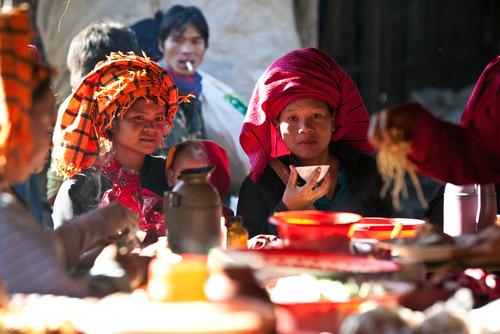Burma (also known as Myanmar) is at a challenging crossroads on its way to democracy, while simultaneously facing ethnic strife. Burmese intellectuals say their country could learn from successes and failures in India, a land of equal diversity and similar strife.
U. Soe Myint, editor-in-chief of the Burmese newspaper Mizzima, said: “Many ethnic nationalities exist in our country like [in] India. In a broader picture, India cannot only help us to establish our democratic process, but [can] also help us to look at the question of various ethnic nationalities in a national set-up.”
Myint participated in Burma’s pro-democracy uprising in 1988 and was detained by the Burmese army. In 1990, he gained worldwide attention for the plight of Burmese people by hijacking a Thai International Airways flight headed to India. He did not use violence in diverting the flight. He was arrested, but later acquitted.
He stayed in India for more than two decades, and launched Mizzima in New Delhi in 1998. The publication grew into an independent source of news and analysis on Burma.
“I lived in India for 23 years and the Indian people have given me space and time to learn and share experiences,” he said. “Indian democracy faces many challenges, but it’s moving on for so long.”
Manoj Rai, director of the Society for Participatory Research in Asia, highlighted some of the institutions in India that have strengthened democracy, including the “election commission to conduct regular elections in a free and fair manner, finance commissions to share resources, [and] local governments.”
He said India can also help Burma establish a vibrant civic society with “informed and skillful NGOs, community-based organizations, free and fair media, social accountability systems, and citizen-focused delivery.”
One of India’s recent successes is the anti-corruption campaign that gave birth to the Aam Aadmi party (translated as the Common Man’s Party) in 2012. The movement rallied mass participation and the party has gained political traction with the backing of some high-profile figures in India.
A radio show established by waste-pickers in Bangalore, India, is a sign and symptom of the political awareness and enthusiasm that permeates various parts of Indian society.
In May, Epoch Times wrote about Kalamani, a 37-year-old untouchable-caste woman who ran for local office despite great obstacles.
These two examples highlight both the strengths and weaknesses of Indian democracy. The waste-pickers were motivated in part to establish the radio show, because they feel unrepresented. Yet they also found the freedom to express themselves and develop community-support institutions. Kalamani, who only goes by her first name as surnames carry class connotations, had great difficulty raising campaign funds, faced ridicule, and did not win the election. Yet she took the first step and encouraged many.
India, like Burma, is ethnically and religiously diverse, with ethnic majorities and minorities engaged in decades-long conflicts. India’s northeast has especially experienced such fighting.
A paper published by the South Asia Intelligence Review, titled “Survey of Conflicts and Resolution in India’s Northeast,” explores some of the mistakes made in the region.
The minority of tribal mountaineers were politically distinguished from the lowland majority during British rule and thereafter. “Such isolationist policies persisted … under the mistaken motives of ‘protecting’ the tribal population against exploitation by ‘outsiders.’ The cumulative impact of these policies was a deepening of fissures between tribal and non-tribal populations,” states the article.
Namrata Goswami at the Institute for Defense Studies and Analyses wrote about possible ways forward in the 2010 paper “India’s Northeast 2020: Four Alternative Futures.”
Goswami recognized the extreme complexity of the situation, but made some suggestions, including (but not limited to) the use of funds from immense tourist interest in the culturally rich region to support the communities that feel marginalized; and the assurance of political representation to such communities.
“The rise of India and its subsequent economic development creates a strong paranoia about the peripheral status of the Northeast. The apprehension is that the more prosperous communities in India will migrate to the Northeast and take over its land, resources, and businesses. Various ethnic communities in the Northeast view ‘others’ in the classic Huntington ’Clash 11 of Civilisations’ hypothesis with ‘us versus them’ at the core,” Goswami wrote.
This leads to clashes, as groups who feel marginalized call for separate states or seek to exert power in other ways.
Rai said that India and Burma could work together to figure out the future of these complex and diverse lands. He also noted that it is in India’s interest to support the stability of its Asian neighbor.
“It seems [the] opening up of Burma for democratic experimentations has also exposed Burma for mis-experimentations,” he said. “Burmese citizens are eager to move forward to strengthen democracy. If India does not move fast to support this eagerness ... people will accept whatever democratic models are imported by northern and Chinese donors, who actually may not have relevant experiences in establishing and sustaining democracy and democratic institutions.
“And if that happens, India will have another disturbed neighbor to disturb its own peace and prosperity.”
Epoch Times staff member Tara MacIsaac contributed to this report.
*Image of Burmese tribal women via Shutterstock





